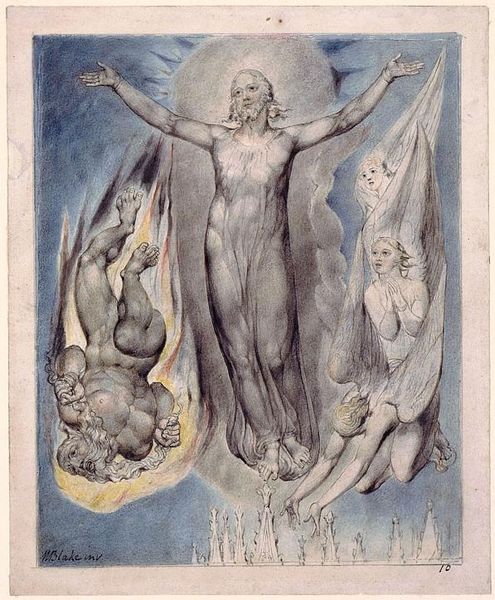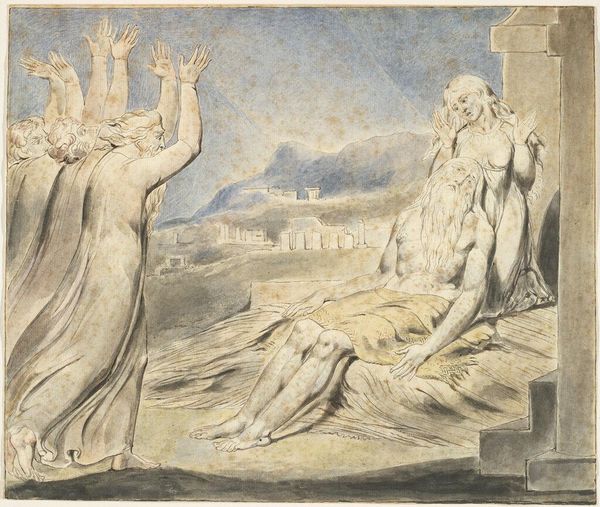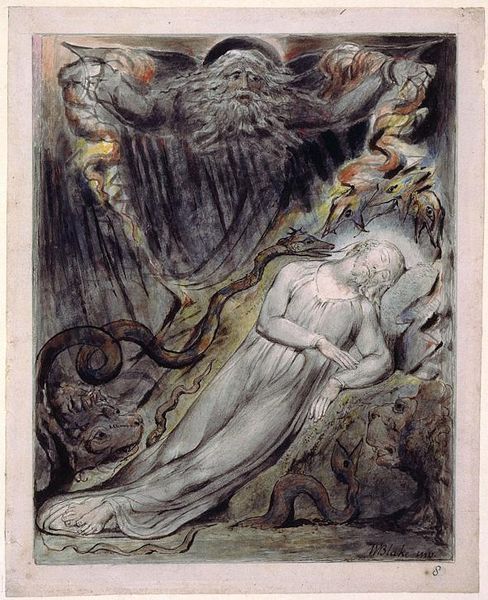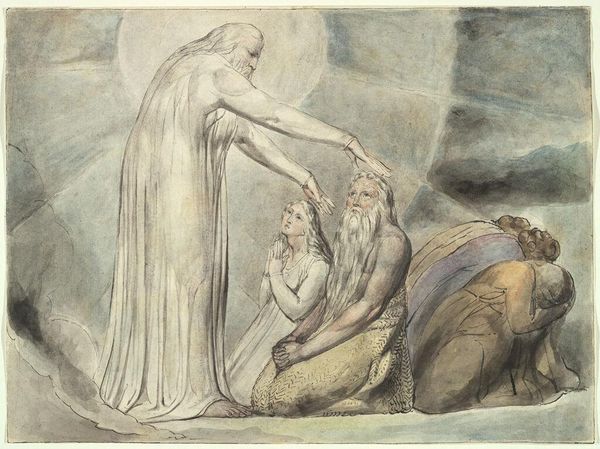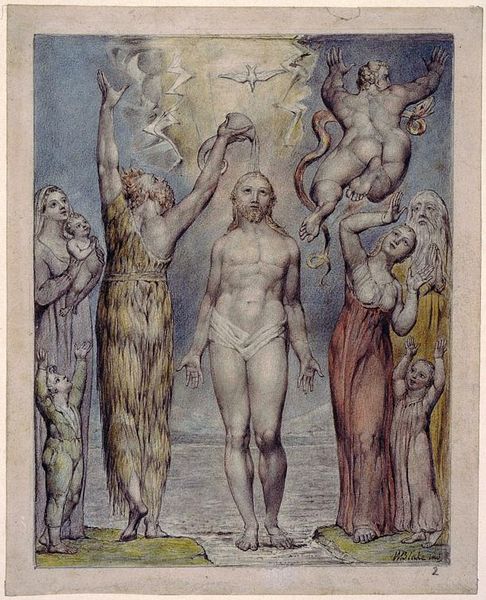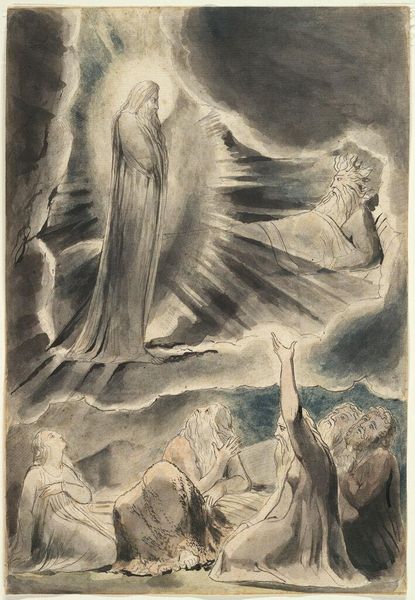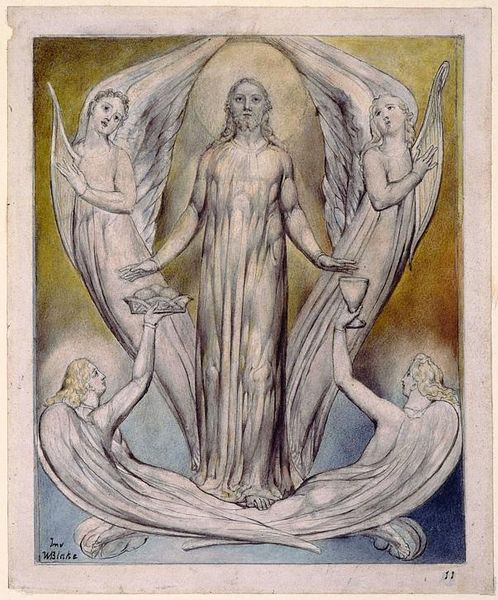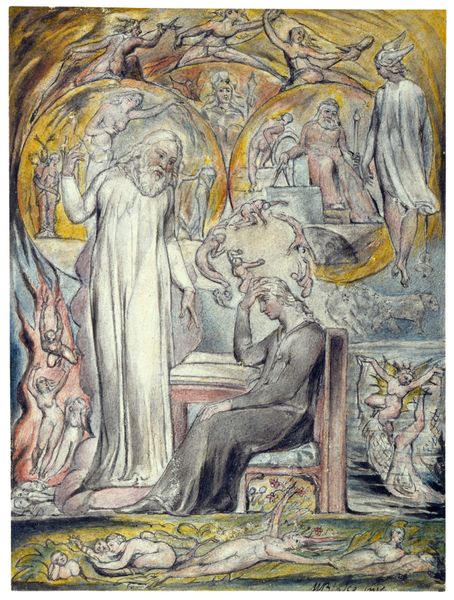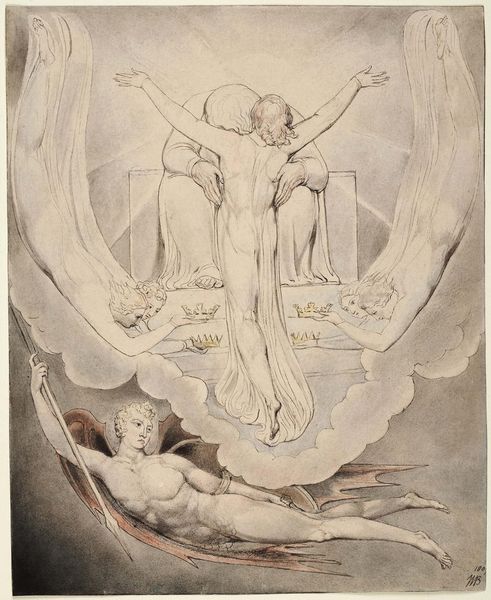
drawing, watercolor, ink
#
drawing
#
narrative-art
#
charcoal drawing
#
figuration
#
watercolor
#
ink
#
romanticism
#
line
#
history-painting
#
watercolor
Copyright: Public domain
William Blake created this illustration to Milton's Comus in the late 18th or early 19th century, a period marked by revolutionary fervor and profound social change. Blake, a visionary artist and poet, was deeply engaged with the political and spiritual upheavals of his time. In this piece, we see a tension between innocence and corruption, reflecting the moral landscape of Milton's poem. The ethereal figure of the Attendant Spirit challenges the debauchery and entrapment enacted by Comus and his monstrous crew. Blake critiques the era's rigid social hierarchies and the exploitation of the vulnerable. His art frequently champions the marginalized and questions the abuse of power. Blake himself said, "The imagination is not a state: it is human existence itself." Through his visionary art, Blake seeks to awaken the imagination. This illustration embodies a deep sensitivity to the emotional and spiritual struggles of individuals caught in systems of oppression.
Comments
No comments
Be the first to comment and join the conversation on the ultimate creative platform.
